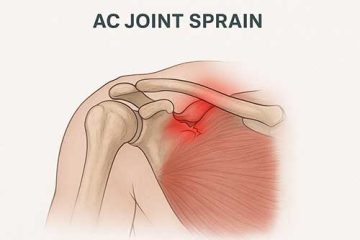Adhesive Capsulitis
Adhesive capsulitis is a condition that is difficult to define, treat, and even explain.
We know that with adhesive capsulitis, there is a painful, progressive loss of motion. There’s some pathological trigger that starts a process of synovial pathology and capsular fibrosis in motion. We don’t exactly know what the trigger is. There’s some speculation that it may be an autoimmune condition. At any rate, because of the capsular fibrosis, there’s contracture in the capsule and then a subsequent loss of motion. The condition is more common in women than men. Indeed, some patients will recover fully, whether or not they have treatment, but it can take many months or even years for recovery, and some patients don’t fully recover despite treatment.
Common Presentation of Adhesive Capsulitis
Adhesive capsulitis progresses through a series of predictable stages, initially characterized by significant pain. Patients understandably don’t move as much due to the pain, and the capsular contracture, along with reduced mobility, can cause some freezing. Then in the third stage, the joint is considered frozen. It stays that way for a period of time, and then, in some individuals, it will naturally start to thaw out, and motion will be restored. The onset may be related to a particular condition or it may just be insidious. One of the hallmark findings with this is the loss of external rotation in neutral. That’s a key exam finding that I’ll demonstrate here in just a little bit. There’s also a loss of passive gliding of the humeral head, usually inferiorly, posteriorly, and anteriorly. So, all of these need to be addressed through the manual therapy component.
Learn More About Adhesive Capsulitis and Common Shoulder Diagnoses
Dr. Chris Durall, PT, DPT, MS, SCS, LAT, CSCS, leverages his extensive experience to create comprehensive online courses. These courses empower therapists to effectively differentiate orthopedic issues, leading to the development of impactful treatment programs that achieve positive functional outcomes for patients.
Dr. Durall’s expertise stems from a distinguished career, including his roles as Director of the Student Health Center Physical Therapy Department and a Graduate Faculty member at the University of Wisconsin-LaCrosse. His profound understanding of manual therapy and sports physical therapy is a cornerstone of his curriculum, seamlessly blending attributes from both disciplines into his teaching.
Chris Durall’s online courses, Critical Analysis and Treatment Strategies for the Complex Shoulder and Clinical Examination and Treatment of the Cervical and Upper Thoracic Spine, provide a comprehensive approach to effectively evaluating and treating the cervical, thoracic, and shoulder regions.
Healthclick Online CE for PT, PTA and OT – Learn More

References
Reno, C., Swinton, P. A., & Alexander, L. (2025). Extracorporeal Shock Wave Therapy for Chronic Adhesive Capsulitis in Type 2 Diabetics: A Systematic Review with Meta-Analysis. Physical Therapy.
Hill, Jordan L. “Evidence for combining conservative treatments for adhesive capsulitis.” Ochsner Journal 24.1 (2024): 47-52.
Shim, Seung Bo, et al. “A comparative study to evaluate the risk factors for medium-sized rotator cuff tear in patients younger than 50 years of age.” Arthroscopy: The Journal of Arthroscopic & Related Surgery 34.11 (2018): 2971-2979.


